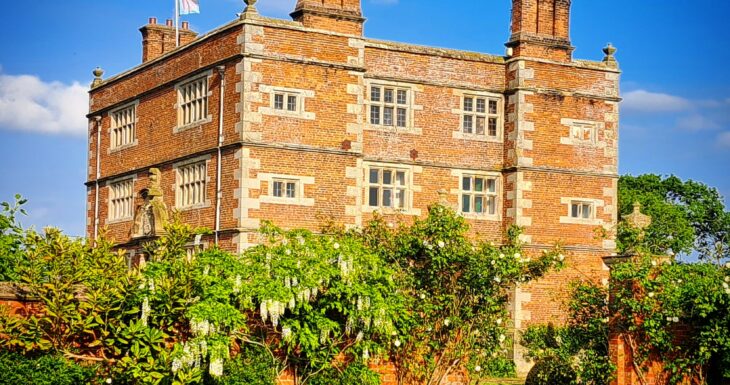Soulton Hall
Near Wem, Shrewsbury, Shropshire. SY4 5RS

Soulton Hall is the sixteenth century architectural project of Sir Rowland Hill, who was the publisher of the Geneva Bible, and is linked with the eponymous hero of Shakespeare’s ‘As You Like It’.
Constructed during the tumult of the Counter-Reformation in the reign of Mary Tudor, the building is understood to be constructed in sophisticated humanist codes that draw from geometry, philosophy, classical antiquity, and scripture, and it serves a monument to the dangerous political and social work of Tudor statecraft that was necessary to unleash the English Renaissance of Elizabth I’s reign. It is thought possible that Mathew Parker, godfather of Elizabeth I and her first Archbishop of Canterbury, was sheltered here.
Containing a concealed chapel in the basement, multiple bookcases hidden in its thick walls, a Rithmomachia Floor in the Prayer Room and a priests hide in Hill’s studiolo, its is believed that the house served as a base for the affairs of state that delivered the hugely influential Geneva Bible to England, along with the other texts published by the polymath who built the building (which ranged over medicine, the discovery of America, politics, classics and Eurasian history).
Earlier phases of the manor’s history reach back to Saxon times and include the archaeology of a “lost castle” rediscovered in during multi-season excavations by DigVentures, and the high medieval complex that Thomas Lodge (writer of the ‘As You Like It’ source book ‘Rosalynde’) would have known from his family’s time at the manor before the arrival of Sir Rowland Hill.
The landscape holds the recently constructed Soulton Long Barrow, which revives an architectural form not seen for thousands of years. In the precincts of the house is dancing pavement, which is thought to show the choreography of the dance of harmony that closes ‘As You Like It’, with a view to the woodland associated with the Forest of Arden setting of the play.
The current hall would have been only the corps de logis of wider complex of Sir Rowland Hill’s time. This complex has survived in a muted form and today includes a seventeenth century court room with round windows, the venue of an aborted witch trial in the late 1600s.
Hill had a foundational role in modern English drama, and that association has lately been revived with drama being performed in and around the buildings once again.
Within the house personal effects of Sir Rowland Hill survive, which includes his giant oak Justice Table.
The building continues to be occupied by decedents of his family.
====
Acknowledgement: the above summary contains intellectual property of the country house expert James D. Wenn of BYRGA GENIHT, who is engaged ongoing consultancy at Soulton.
